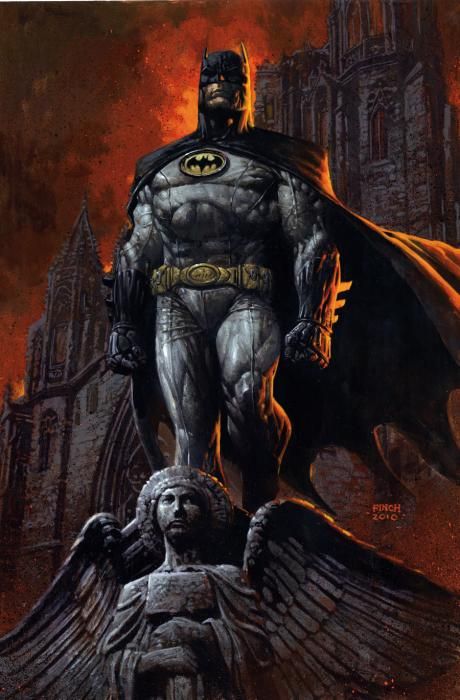David Finch doesn't draw like Todd McFarlane, though there's a definite early-Image Comics sensibility in the pages that gives Finch's work the look of an offspring of Jim Lee and Marc Silvestri, but this first issue of "Batman: The Dark Knight" resembles nothing if not McFarlane's "Torment" storyline from his first few issues of "Spider-Man."
Like McFarlane, Finch is doing his first major work as a writer/artist on a character who is practically synonymous with the company that publishes the comic. Like McFarlane, he's a more polished artist than writer. Like McFarlane, he uses a lot of crosshatching to depict the gritty streets of the city. Like McFarlane, he uses a lot of first-person narration to keep the story manically grim. Like McFarlane, he's got a scaly villain with big pointy teeth.
If McFarlane was doing his version of Frank Miller's grim-and-gritty comics in "Spider-Man" -- and he was, though with a more overt cartoonish absurdity -- then Finch is doing his version of Frank Miller's grim-and-gritty comics, but more overtly serious. And dull.
The greatest sin of "Batman: The Dark Knight" #1 isn't Finch's over-rendered artwork, which lends itself nicely to the gothic, or industrial, architecture of the setting (I always thought Finch would make a fine Gerhardt for someone else's Dave Sim), it's that this is a generic Batman plot pushed into tough-guy mode by some attempts at hard-edged language and confrontation. There's no imagination on display in this issue. It's Batman looking for a lost girl, someone wedged into his past, retroactively, just to build a connection between the character and Bruce Wayne.
On second thought, it's not so much like Finch doing Frank Miller. It's Finch doing Frank Miller's version of what "Hush" was like. But it's without the vigor that Miller brings to even his worst comics.
And like "Hush," Finch gives us a retroactive relationship that leads to a mystery, and that mystery guides us to Batman's rogues gallery. Killer Croc shows up early, and another rogue arrives at the end, not so much as a punctuation mark, but as a comma. Surely more will arrive soon, for better or worse.
Finch is a suitable artist for a superhero Batman snarling at criminals in the back alleys of Gotham. He can draw dark and gritty and chiseled-from-brick as well as any mainstream artist. But his work has no fluidity to it. No joy. No energy.
And maybe that's okay for a Batman story, but in a world where Batman's incorporated, hopping around the globe on adventures, this opening issue feels regressive, inert, and not particularly worth reading.

